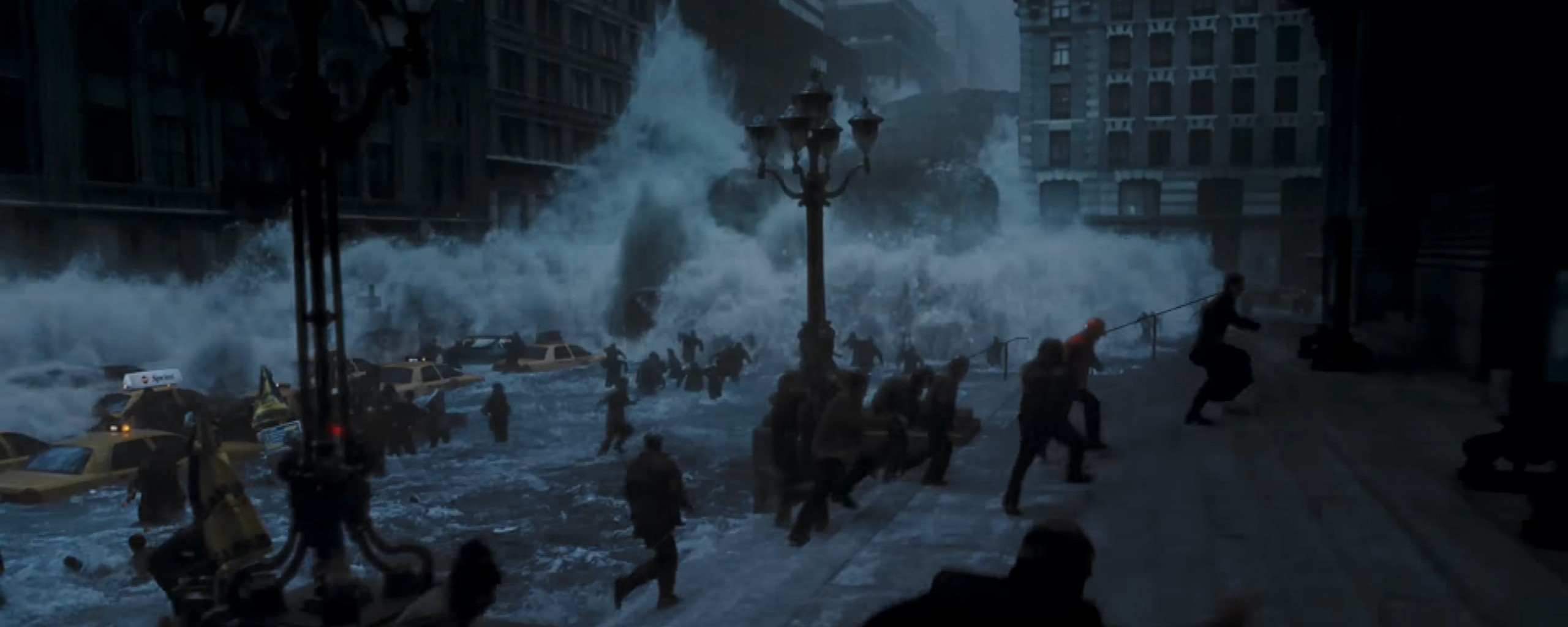

Last week I went to see a conversation with two artists who address climate change head-on in their work. Playwright Julia Levine writes a series for “Artists & Climate Change” and is the artistic producer of theatrical project The Arctic Cycle. Kim Stanley Robinson, a venerated sci-fi author (most famous for his Mars trilogy), has framed many books around climate change and environmental devastation. Most recently, 2140 imagines a New York City decades after the seas have risen–but where life goes on.
The conversation was engaging, two thoughtful people on how they approach climate change (and on Robinson’s recent piece in The Guardian that’s been misinterpreted to suggest he wants to halve the world’s population–like “a supervillain,” he said; I am still laughing about this). But the audience was just as striking in the Q&A: a room full of people who cared about climate change, and who wanted a way to make other people care about climate change, too.
There are gaps between intellectually understanding the seas are rising and internalizing it emotionally (and then, in turn, taking action–whatever action an individual can take). This isn’t our fault; it’s the way our brains process scale. This week I’ve been revisiting a fantastic piece on this, and on the literature of climate change–Emmalie Dropkin’s “We Need Stories of Dystopia Without Apocalypse,” from last summer. She cites studies on how our brains can’t process “the future” much past 15 or 20 years from now, and as the timeframes of “the future” lengthen, we get worse at imagining them. “Human difficulty in imagining the future may help explain our inattention to the long-term consequences of climate change,” she writes.
But she then cites studies that show how those gaps can be bridged–with things that generate empathy, with fiction, not facts. Robinson and Levine talked about the same ideas. For me, it was a single short story that finally made me understand climate change beyond the intellectual. In 2009, McSweeney’s commissioned a handful of well-known fiction writers to imagine life in 2024. In one of them, Jim Shepard’s “The Netherlands Lives With Water,” we follow an (emotionally impotent) hydraulic engineer through the near-future, as the Dutch try to help the world prepare for the floods they’ve always known.
It’s a masterful story. I read it when it made it into Best American Short Stories the following year. The year after that, post-Irene–a storm that largely swerved past New York City–I wrote about it. Because Irene had been a dud, a lot of New Yorkers scoffed about the prospect of Sandy, just over a year later. Sandy did not swerve past New York City; the storm left a deep wound on the city, both physical and emotional, that remains to this day. I live less than a block from New York Harbor, and I think about water rising, every day.
But there’s something to these stories, and how they’re told, that makes the difference. Robinson has been described as a realist and a utopian thinker, a delightful combination, and while 2140 might be too far away for our brains to process, there is a great power in the idea that we can continue on, that we will continue on. I was thinking about this when, deep in The New Yorker‘s archives, I stumbled upon Anthony Lane’s 2004 review of The Day After Tomorrow, possibly the stupidest/greatest movie ever made about climate change. Uh, “about climate change” is loose here. But you know what I mean.
It’s peak Anthony Lane–”On the East Coast, the temperature in New York is dropping fast. At one point, it plummets by ten degrees per second, a fall not registered since Bette Davis said “‘Nice speech’ to Anne Baxter at the end of “”‘All About Eve'”–but at the end, he questions the wisdom of making this movie at all:
The very silliness of “The Day After Tomorrow” means that global warming will become, in the minds of moviegoers, little more than another nonspecific fear about which they must uncomprehendingly fret. They will vaguely understand that the United States failed to ratify the Kyoto Protocol, but the reasoning behind this failure will be lost in a frosty mist.
He wasn’t wrong. Ten years after the film came out, Yale Climate Connections assessed its legacy: Americans, a more skeptical group (I apologize on behalf of this entire nation) were more inclined to believe in climate change. But in Britain, Germany, Japan, all places where more people believed in climate change already, it may have made things worse. One German researcher said: “Most people here associate climate change with heatwaves and floods; the film has made them ask: If this is what climate change is like, then we are no longer sure it is real.”
I feel a bit like a broken record: I have previously written about how the mustache-twirling evilness of Cambridge Analytica might serve as a distraction from the smaller but pervasive ethical problems embedded in our digital technologies. There’s a similar sort of distraction going on here: climate change is not a movie villain, and it’s not something that’s going to show up in a distant, hazy future we can’t quite see.


How We Get To Next was a magazine that explored the future of science, technology, and culture from 2014 to 2019. This article is part of our Nature & Climate section, which looks at how human activity is changing the planet–for better or worse. Click the logo to read more.
